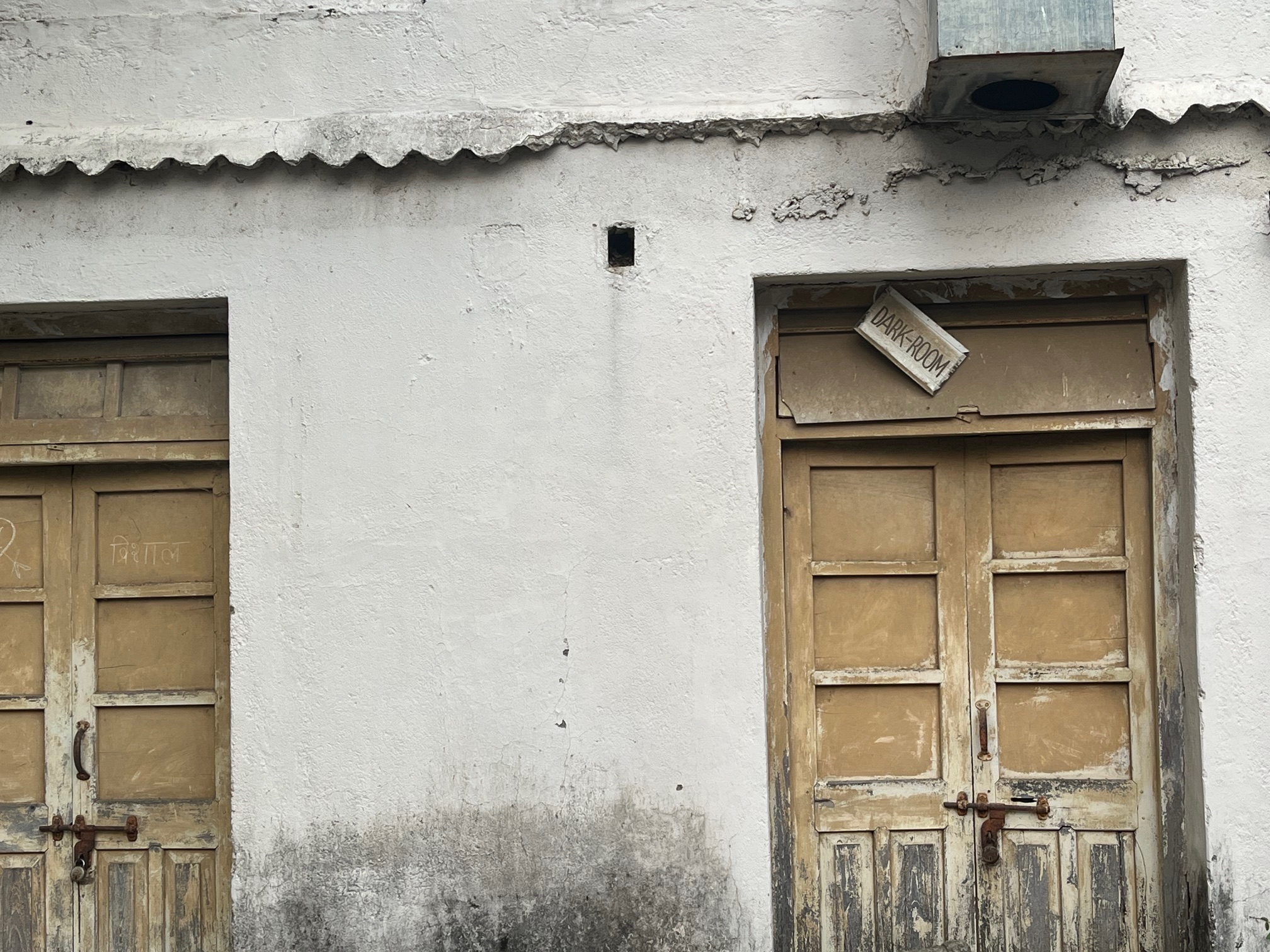
This evening I was walking past the old Kasturba Hospital building—the one that now houses the Department of Community Medicine. I had walked past it hundreds of times, but today, something made me stop.
There it was: a small, weather-beaten board that read “𝗗𝗮𝗿𝗸 𝗥𝗼𝗼𝗺.” It hung askew on the aging wall, its rusted edges trembling slightly in the breeze.
Any day now, it could fall—and with it, perhaps, a chapter of our history would disappear, unremembered.
But that board holds a story.
Half a century ago, long before the hospital grew, this small space tucked on the outer wall of the community medicine department was the cradle of Radiology at MGIMS. Back then, it was in this very dark room that those shadows first began to tell their stories.
The year was 1973. Dr. B.B. Ahuja arrived in Sevagram as our first radiologist. A year later, Dr. P.D. Kanikdaley joined him, commuting every Thursday from Medical College, Nagpur. For two years, they lit up this dark room—quite literally.
There were no computers then. No PACS, no CTs, no MRI suites, no ultrasounds. Nor mammograms. The department stood on the shoulders of three machines: 30 mA, 50 mA, and the mighty 200 mA X-ray. The films were fragile, silver-coated sheets that technicians handled like relics—one misstep, and the diagnosis would vanish.
When a patient walked in, the technician would gently position them for the X-ray. The machine clicked, capturing the image on a film inside a cassette. The cassette was then taken into the dark room. Under the soft red light, the film was placed in a tray with a special liquid to develop the image, then moved to another to fix it, and finally washed. Slowly, the picture appeared—like a hidden story coming to life.
No automatic processors, no digital filters. Just trained eyes and practiced hands. Was the lung field clear? Did the vertebrae align? A good film was not just a diagnostic tool—it was a work of art. A bad one meant repeating the whole process, again and again, until it was just right.
In 1972, the department handled 3,000 X-rays. By the following year, that number had climbed to 5,500—many of them performed at the Civil Hospital in Wardha. Chest films for TB, barium meals, bronchograms—everything was done with diligence and daring.
By 1976, the department had moved into the new hospital building.
In December 1980, Dr. Virindar Mohan joined as Head of Radiology. Around the same time, from the class of 1974, Rajiv Khushu, spent a brief stint here as a registrar before choosing to pursue surgery. From those earliest batches, several students—Vilas Kanikdaley, Tarvinder Bir Singh Buxi, Shadab Mahmood, Nafisa Aptekar, Shirish Dhande, Dr.Raju R.Shahhah, and Rupak Dutta—ventured elsewhere for postgraduate studies. MGIMS, then, did not yet offer MD Radiology.
But change was inevitable. From the class of 1978 onwards, the department began to welcome its own postgraduates. Sunil Mishra, Ashok Kamble, Chandrashekhar Gattani, Power Ravuri, and Suresh Jain were among the first. Over the years, Radiology grew into one of the most sought-after disciplines at MGIMS—a department beloved by students, often their top choice.
The machines grew smarter. The images, sharper.
But that dark room—now silent, now forgotten—was where it all began.
And it deserves to be remembered. Before that board falls off.